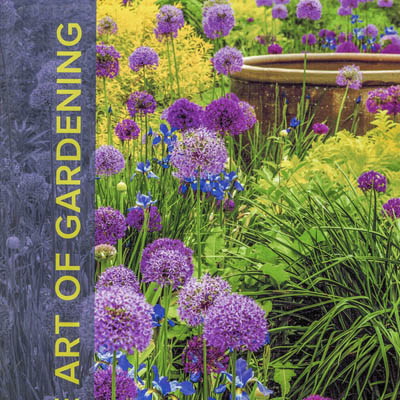Gardeners Embrace Mistakes and Welcome Change
By Marsha Goldberg, Fairfax Master Gardener
“I am afraid to buy plants for my garden,” a friend recently confessed to me. “I am afraid that I will put a plant in a spot where it won’t do well or won’t look good.” My friend has a rather sizable yard so it is easy to understand why she might be intimidated by getting started and making a large commitment of time and money.
 Our conversation made me think about gardens and how they change over time. Change, and not stasis, is, after all, the nature of nature. The cycle of growth and decay is an ongoing process in the garden among living and nonliving elements of the Earth. Trees fall during storms and rocks crumble into dirt, so yanking out a plant that is not working because it is in the wrong place or just because it looks less attractive than you imagined is simply moving that process forward a bit faster. Why live with a plant that you don’t like or is not working the way you expected? Surprisingly, I have found that much of my volunteer work at the National Arboretum in Washington, D.C., includes moving well-established plants from one place to another. It may be that a plant has outgrown its original spot or is overtaking its neighbors. It is often because it is no longer pleasing in that location. Plants are not discarded; they are moved to another area that is more suitable to both people and plants.
Our conversation made me think about gardens and how they change over time. Change, and not stasis, is, after all, the nature of nature. The cycle of growth and decay is an ongoing process in the garden among living and nonliving elements of the Earth. Trees fall during storms and rocks crumble into dirt, so yanking out a plant that is not working because it is in the wrong place or just because it looks less attractive than you imagined is simply moving that process forward a bit faster. Why live with a plant that you don’t like or is not working the way you expected? Surprisingly, I have found that much of my volunteer work at the National Arboretum in Washington, D.C., includes moving well-established plants from one place to another. It may be that a plant has outgrown its original spot or is overtaking its neighbors. It is often because it is no longer pleasing in that location. Plants are not discarded; they are moved to another area that is more suitable to both people and plants.
Says R. William Thomas, Executive Director of the renowned Chanticleer Garden in Wayne, PA, in the book The Art of Gardening: “We are unsentimental about removing plants. When their function is past, so are they. This process rejuvenates spaces and fuels ideas for plants that will work better in the design or theme of an area.”
Not long ago, when I was just starting in the Master Gardener program, I asked a friend, a professional landscape architect, to help me redesign my shady front yard, eliminating all the grass, which had never been very successful anyway, and replacing it with perennials, shrubs and groundcover. The result is lovely, as people walking through the neighborhood often stop to tell us. However, as I became more knowledgeable about the wide range of plants available beyond vinca, azaleas and hydrangeas, I somewhat regretted that we did not use more unique specimens. Rather than live with that regret, I have started to pull out the fast-spreading vinca in handfuls as I search for a good source of Epimedium × versicolor ‘Sulphureum’ (one of my new, albeit less well-known, plant loves) to replace it. I am making use of the vinca by passing it on to friends whose yards have shady spots that need a quick filler.
More important, whether it is a matter of aesthetics or an instance of the wrong plant/wrong place, if you have a plant that failed, or made a choice you regret, it is likely that the experience has resulted in your becoming more educated about your garden and your tastes. After losing a beautiful and pricey hydrangea, I now know never to plant in certain parts of my yard where the clay soil drains slowly without first adding Perma-Till or gravel to the bottom of the hole.
When I have a disappointing experience in the garden, I think of a quote from the Irish playwright, Samuel Beckett, that seems especially appropriate for gardeners: “Try Again. Fail again. Fail better.”